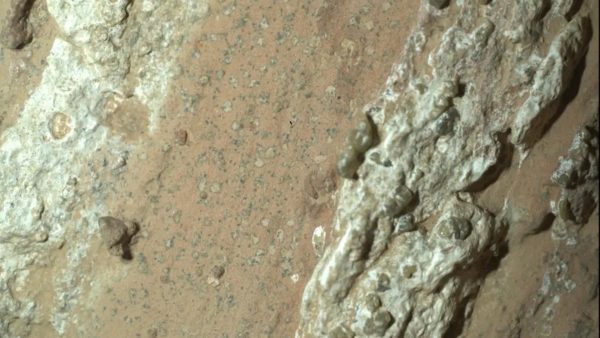Perseverance, a Mars rover sent on July 30th 2020, was examining a rock formation called ‘Bright Angel’ near the rocky outcrops of an ancient river valley called Cheyava Falls, when it took this photo:

While it might not look like much, this is actually humanity’s first clue to life on Mars! Scientists studying the Bright Angel formation found a mix of chemicals that could have powered microbial life. Associate administrator, Nicky Fox stated that this picture could help NASA deliver what they had set out to do; identify a potential biosignature of life on Mars. Cheyava falls was a place that scientists believed was once filled with water billions of years ago, before Mars’s magnetic field collapsed. The first science instruments found the rocks were made of clay and silt, which on Earth preserve traces of ancient microbial life well. They also tend to contain a lot of organic carbon, sulphur, rust, and phosphorus. This rock formation was about a meter long and had colourful spots on the surface that, when examined closely, revealed to be a unique pattern of minerals like greigite. On Earth, these minerals are found in environments with microbes or decaying organic matter. These minerals may have formed through reactions involving organic material, which could be a sign of past life. What makes this finding exciting is that these are some of the youngest rocks NASA studied, suggesting Mars might have stayed habitable longer than expected. While the data doesn’t prove life existed, it strengthens the case and boosts the need for more evidence.
However most of all, it raises the most important question of space exploration- Are we alone?

